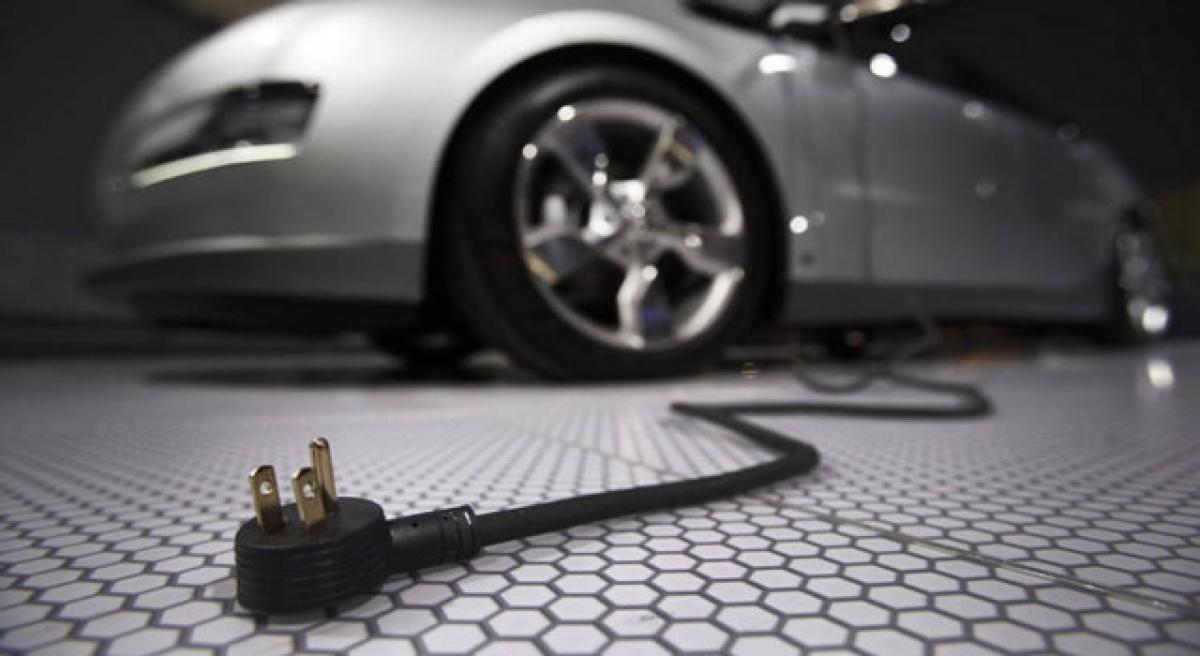Live
- AR Rahman’s ‘Aadujeevitham’ Music Nominated Twice at 2024 Hollywood Awards
- NBK’s action drama ‘Daaku Maharaaj’ unveiled with power-packed teaser
- Nehru’s services unforgettable : Veerlapalli
- ROB ready by March-end
- 30.1-9-49-10 – Anshul Kamboj picks up all 10 wickets in Haryana vs Kerala Ranji Trophy match
- South Korean FM Cho, Blinken hold talks on margins of APEC summit in Peru
- India’s insurance sector growth surpasses China, Thailand: McKinsey
- CLOSE-IN: Indian cricketers from Paupers to Princelings
- Delhi-NCR's air quality remains hazardous for residents
- South Korea, US, Japan to announce establishment of trilateral secretariat this week
Just In

The Draft National Electricity Plan proposed by the NITI Aayog states that the two most significant consumer needs (after lighting), transportation and cooking, will be the first candidates for inter-play of market forces, which will be reinforced by technological advancements in areas of Electric Vehicles and induction cooking.
The Draft National Electricity Plan proposed by the NITI Aayog states that the two most significant consumer needs (after lighting), transportation and cooking, will be the first candidates for inter-play of market forces, which will be reinforced by technological advancements in areas of Electric Vehicles and induction cooking.
The government will remove distortions in pricing and taxation, and encouraging trade and creation of related infrastructure. Other than houses, the potential for electrification of energy demand is immense, and this is particularly true of transportation (electric vehicles), cooking, agriculture and industries, the Draft adds. With a view to promoting electric mobility in the country, the Government of India approved the National Mission on Electric Mobility (NMEM) in 2011 and subsequently National Electric Mobility Mission Plan 2020 was unveiled in 2013.
This Mission Plan has been designed mainly considering the Fuel Security and Environmental Pollution in the country. NMEM aims for a cumulative fuel saving of about 9,500 million litres equivalent resulting in reduction of pollution and green house gas emission of 2 million tonnes with targeted market penetration of 6-7 million vehicles by 2020.
As part of this mission, Department of Heavy Industry formulated a scheme namely FAME-India [Faster Adoption and Manufacturing of (Hybrid &) Electric Vehicles in India]. The overall scheme is proposed to be implemented over a period of 6 years, till 2020, wherein it is intended to support the hybrid / electric vehicles market development and its manufacturing eco-system to achieve self-sustenance at the end of the stipulated period.
The scheme is one of the green initiatives of the Government of India, which will be one of the biggest contributors in reducing pollution from road transport sector in near future. The scheme has 4 focus areas i.e. Technology Development, Demand Creation, Pilot Projects and Charging Infrastructure.
Under FAME India Scheme, 148275 electric/hybrid vehicles (xEVs) have been given direct support by way of demand incentives amounting to Rs. 192.56 Crore (Approx) since its launch on 1st April 2015 and till 30th June 2017. This has resulted in approximately fuel saving of 13553917 litre and CO2 reduction of 33971052 Kg. For promotion of electric mobility, the Government has already given financial support under different focus area of the FAME India Scheme since its inception on 1st April 2017.

© 2024 Hyderabad Media House Limited/The Hans India. All rights reserved. Powered by hocalwire.com







